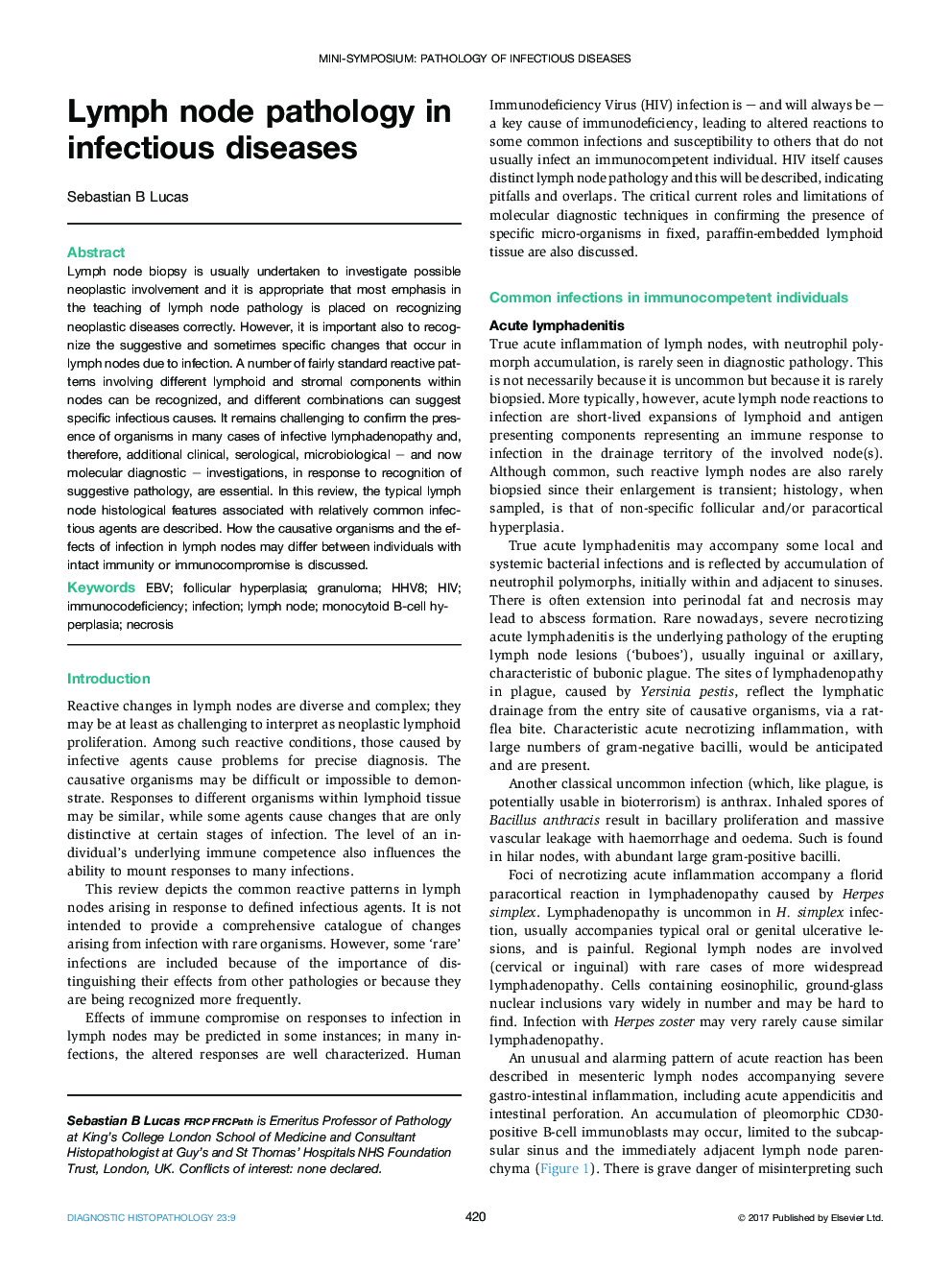| Article ID | Journal | Published Year | Pages | File Type |
|---|---|---|---|---|
| 5715987 | Diagnostic Histopathology | 2017 | 11 Pages |
Lymph node biopsy is usually undertaken to investigate possible neoplastic involvement and it is appropriate that most emphasis in the teaching of lymph node pathology is placed on recognizing neoplastic diseases correctly. However, it is important also to recognize the suggestive and sometimes specific changes that occur in lymph nodes due to infection. A number of fairly standard reactive patterns involving different lymphoid and stromal components within nodes can be recognized, and different combinations can suggest specific infectious causes. It remains challenging to confirm the presence of organisms in many cases of infective lymphadenopathy and, therefore, additional clinical, serological, microbiological - and now molecular diagnostic - investigations, in response to recognition of suggestive pathology, are essential. In this review, the typical lymph node histological features associated with relatively common infectious agents are described. How the causative organisms and the effects of infection in lymph nodes may differ between individuals with intact immunity or immunocompromise is discussed.
